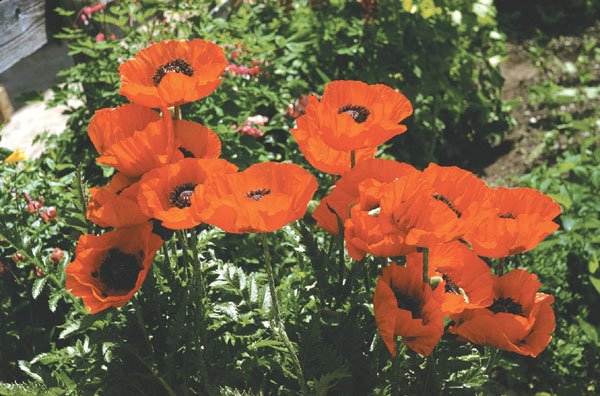When I left you last week, I was going to continue growing my
two opium poppy plants under risk of getting them confiscated by
federal drug enforcement agents. It seems that Papaver somniferum,
or opium poppies, are the only variety of more than 100 poppies
that are illegal to grow.
When I left you last week, I was going to continue growing my two opium poppy plants under risk of getting them confiscated by federal drug enforcement agents. It seems that Papaver somniferum, or opium poppies, are the only variety of more than 100 poppies that are illegal to grow.
Part two of my law-breaking poppy story is actually about my law-abiding poppies. I’ve always liked poppies. I think it goes back to when I was a kid, watching the poppy scene in “The Wizard of Oz.” And so, it was with pleasure that I started growing many types of law-abiding poppy varieties many years ago.
This is an especially appropriate time to write about poppies because most can be planted right about now all the way through October and even November. Yes, even with the cold weather approaching, poppies can be planted and will, in fact, thrive during the winter and spring in our area. Don’t fear frost because poppies can take cold weather. What they can’t take is extremely hot weather. That’s why most poppies will bloom in early spring to welcome the onslaught of spring, but will die down by the time our hot weather hits. The good news, though, is that poppies are perennials or self-seeding, so they’ll come up year after year. Thanks to birds and the wind, once you plant poppies they’ll usually spread all over the garden through volunteers.
When we think about poppies, most Californians automatically think of our state flower, the California golden poppy (Eschscholzia). Be aware that this variety of poppy not only comes in golden orange, but also cream, yellow, pink, red and magenta. They are very easy to start from seed. In fact, you can’t buy them in already-started packs because they’re so easy to start from seed. You can buy the seed off the racks or get a bigger choice through mail-order seed catalogs, such as Burpee or Park.
However, there are many other types of poppies, including the Iceland poppy (Papaveraceane nudaucaule), the Oriental poppy (P. orientale), and the Flanders and Shirley poppies. You can buy some of these types as already-started transplants. I bought several six packs of Iceland poppies last November, and have had them blooming in my garden ever since.
When transplanting already-started poppies, be careful about planting individual plants so their crown (center stem) is not buried. Planting too deep will lead to rot. Also be aware about spacing. Plant them at least six inches to a foot apart for good air circulation, avoiding later problems with disease.
In order to plant poppy seed, it might be advisable to mix the tiny seed with three parts sand. This will help keep the seed separated and less likely to clump too close together for satisfactory germination. Do not bury poppy seeds. Instead, simply cover them with a very thin layer of soil. You can lightly rake the area after spreading poppy seeds, or lightly sprinkle with water. This is sufficient to get them started.
Poppies are easy to grow and offer loads of bright color year after year in early spring.














